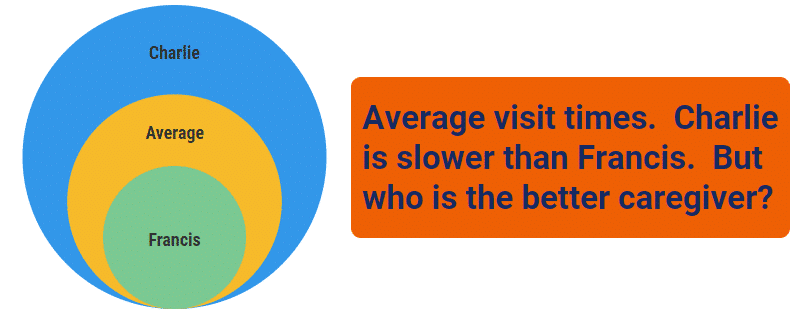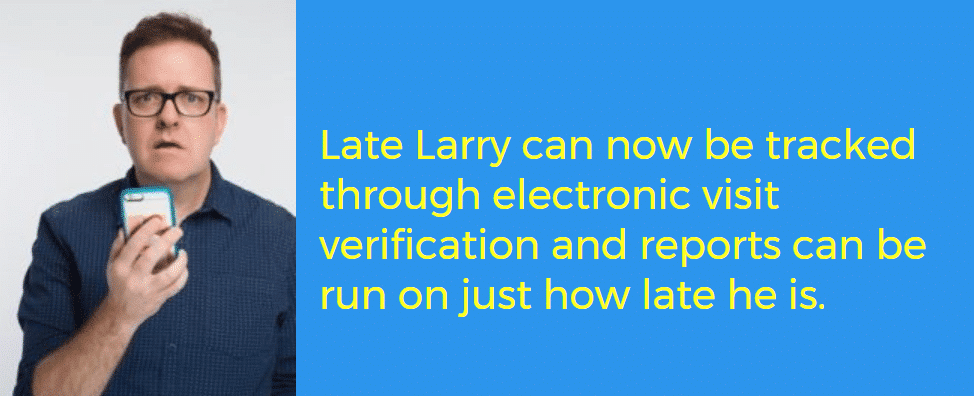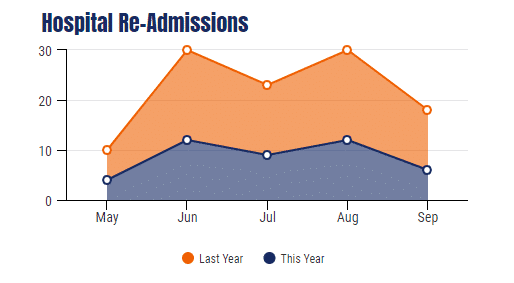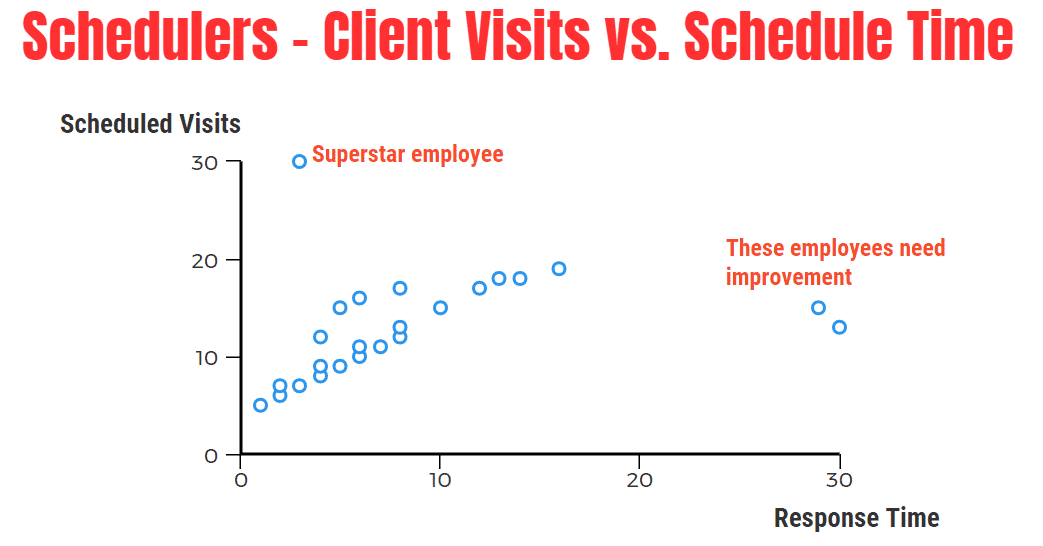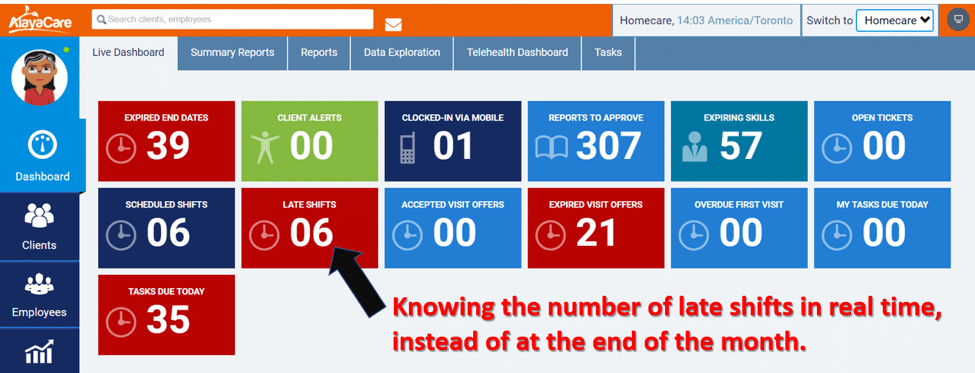Blog
What is Business Intelligence?
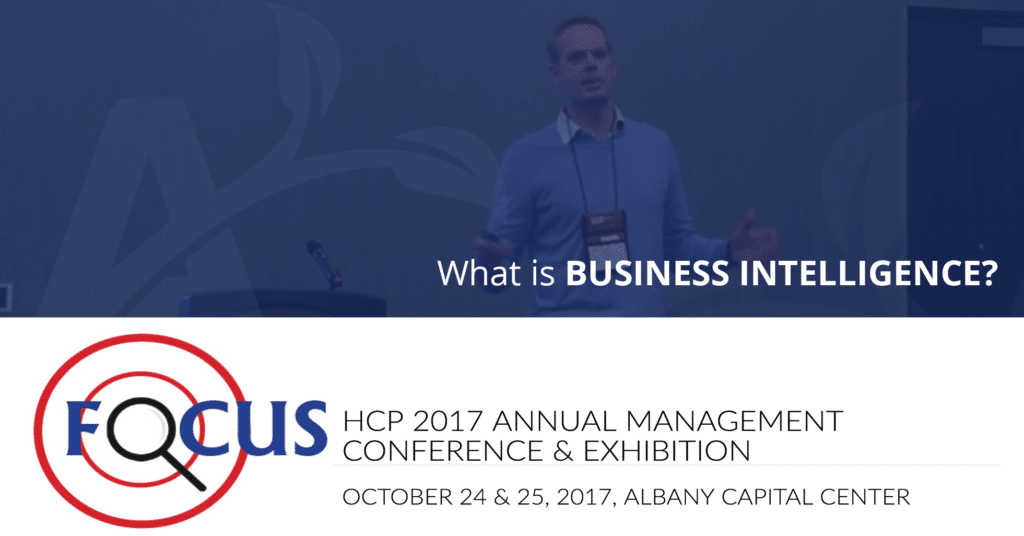
At the HCP conference in Albany, NY this month, AlayaCare was tapped to give a presentation on Business Intelligence (BI) as it relates to the home care software industry. This blog post is a recap from that presentation, and here you will learn how you can unlock the potential of BI to move your home care agency forward in ways you may not have thought possible.
{{cta(‘fa76defd-f41c-4876-be7a-89a6b879495e’)}}
What is Business Intelligence (BI)?
In the home care industry, the shift to electronic medical records, digital office systems and cloud computing has made capturing and compiling large amounts of data much easier.
But data is just data, unless you can turn it into information.
BI is simply the technology that allows you produce meaningful reports (not the standard reports you are used to), so that you can take action to improve your business.
Examples of Business Intelligence for Home Care
Let’s dive right in to the fun stuff – here are some examples of meaningful reports that can be generated with the click of a mouse:
Most On-Time Caregiver
Have you ever noticed what all time sheets on paper have in common? Nobody is ever late!
Converting from paper to an electronic visit verification system automatically time and location stamps each caregiver. So “Late Larry” can no longer be at Starbucks at 9:05 and show up to Mrs. Johnson’s house at 9:15…and yet clock in at 9:00.
Not only does technology in this case change and improve employee behavior, but as a business owner or manager you have data that is collected automatically that can drive powerful reports.
You can reward On-time Olivia, while Late Larry earns a meeting with the HR department.
Average Visit Time
Have you ever wondered how long a certain visit should take (for example wound care)? Or perhaps you suspect that Chatty Charlie may be spending a bit too much time per visit. Or maybe Fast Francis is spending too little time.
Although there are other factors at play, if the BI makes a strong enough case it can generate conversations that need to happen.
For example, over the course of a full year you may discover that Chatty Charlie spends 77% more time with clients than Fast Francis, despite them having very similar caseloads.
So who is the better employee?
All we know is that Fast Francis is the faster employee.
When we layer a customer satisfaction survey on top of the time logs, we have the answer. If their satisfaction levels are similar, then you need to learn from Francis what makes her so fast and incorporate that into training of other employees. Likewise, you need to learn from Charlie what makes him so slow and correct that behavior with him and all other employees.
Hospital Readmissions
Imagine how strong of a sales pitch you have to referrers if you can show that you lower hospital readmissions with the care you provide? Business Intelligence can offer that without any extra work required – you are already collecting that data now.
For example, if it is known that 25% of patients with chronic heart failure are admitted into a hospital 3 times per year, but under your care they are only admitted 2 times per year, that is a massive savings on the health care system and more patients should be referred to your home care agency.
Likewise, you can also track your own progress year over year:
Condition by Region
Anything that is measured can also be cross referenced by state, city, county and postal code. For instance, the following questions sample could be answered:
How many caregivers with dementia training do we have in Westchester?
What is the breakdown of late visits per county?
What is the breakdown of missed shifts for each postal code?
Our clients that are reporting loneliness – are they in specific geographic regions?
Our clients that experience falls – is there a geographic correlation?
The answers to these questions can help govern decisions on who to hire, and where to hire.
Fastest Scheduler
Much like how electronic visit verification keeps caregivers honest and forces them to be on time more often, computer systems also time stamp activities of everyone at head office.
One of our clients adopted a reward system for fastest turn around time between when a patient was referred to the point the first visit was scheduled. What gets rewarded, gets done. This move dramatically changed the culture in the scheduling department, improved response times, and became a point of competitive differentiation.
And there was no data that was required to be collected – they just had to decide that this would be a useful metric to measure and reward.
Another application of this could be number of scheduled appointments per coordinator.
What happens when Carrie the Complainer comes by your office and says she is too stressed and overworked?
Where is the proof?
Business Intelligence allows you to say, “Well, let’s look at what the numbers tell us.”
Collecting Data
Most home care agencies can be overwhelmed with the thought of collecting new data. The good news is that you are already collecting it through service tasks, ADLs and clinical documentation.
The problem is that the data is either not in a form to generate insights (for example, it is on paper), or it’s in separate digital formats (using 2 or more software solutions that don’t talk to each other).
By going to a digital and point of care solution (a mobile app instead of paper), all the data is collected for you automatically by all of your caregivers.
Signs Your Home Care Agency Needs Business Intelligence
Reporting Takes Too Long
We have seen companies run reports at 11pm because a report can take hours and bog down the whole IT system. If your dream to run a report in seconds, a BI solution is for you.
Inconsistent Reports Across Departments
Without the appropriate tools in place, creating reports that include information across multiple departments can be a nightmare for most agencies. Systems and formats tend to vary for different functions and can take forever to combine.
Inability to Perform In-depth Data Analysis
Typical home care software solutions are very limited on reporting. They tend to come with pre-canned reports that are not robust or flexible.
Agency Data is Too Difficult to Compile
Spending too much time in Excel, merging data, filtering and cleaning up? Do you have complex processes you devised that are complicated to explain to others? This is not a problem when all of your data is stored in one “data warehouse”.
Reports Don’t Use Real Time Data
As Brady Murphy mentioned in his presentation, if you are reporting on what has already happened, it’s too late.
A powerful example is late shifts. Wouldn’t it be better to know in real time which of your caregivers are late for their shifts? It allows you to take action in the moment, rather than reflecting on what could have been at the end of the month.
How about real time reporting of the clients? Rather than reviewing how many clients had falls, what if you could act as the emergency responder to those falls, and better yet, be able to predict those falls?
The Top of the Mountain
The best way to solve problems to avoid them in the first place.
With the vast amount of data that can be collected in the home care world, algorithms can be applied to predict what is going to happen next.
Vitals can either be tracked in real time, or data can be collected over time so that patterns can be recognized.
The best application of the former is to know in real time if Mrs. Smith has had a fall, or if Mr. Johnson is having a heart attack.
The application of the latter is to notice that Mr. Johnson’s vitals are each a little off the week prior.
On their own they may not be red flags, but when combined it could be a scenario in which our machine learning algorithm has spotted this pattern before. In this case, the caregivers can be notified prior to the event take the corrective measures.
Business intelligence is here to stay and will have a dramatic impact on home care agencies. Both to streamline business operations and to improve outcomes for patients.
If you are interested in a demo of our Business Intelligence module, please let us know by filling out our demo request form and we would be happy to schedule a time with you.

